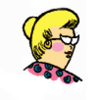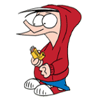Patients suffering with hard-to-treat depression may get relief from noninvasive magnetic brain stimulation
Published in Health & Fitness
Researchers know that people suffering from depression have reduced blood flow and less activity in that part of the brain. Transcranial magnetic stimulation causes increases in both blood flow and in the levels of dopamine and glutamate – two neurotransmitters that are responsible for brain functions like concentration, memory and sleep. It’s the repeated stimulation of this area – the “depression circuit” of the brain – that brings the antidepressant effect.
Some people confuse transcranial magnetic stimulation with electroconvulsive therapy, a procedure used for patients with severe depression or catatonia. With electroshock therapy, the anesthetized patient receives a direct electrical current, which causes a seizure. Typically, people who undergo this procedure experience some memory loss after treatment.
Transcranial magnetic stimulation is very different. It doesn’t require anesthesia, and it doesn’t affect memory. The patient can resume daily activities right after each treatment. Dormant brain connections are reignited without causing a seizure.
It should also not be confused with deep brain stimulation, which is a surgical procedure used to treat obsessive-compulsive disorder, tremors, epilepsy and Parkinson’s disease.
Transcranial magnetic stimulation patients undergo a total of 36 treatments, at 19 minutes each, for three to six weeks. Research has concluded that this is the best protocol for treatment. Some patients report that it feels like someone is tapping on their head. Others don’t feel anything.
Some very minor side effects may occur. The most common is facial twitching and scalp discomfort during treatment, sensations that go away after the session ends. Some patients report a mild headache or discomfort at the application site. Depending on how effective the therapy was, some patients return for follow-ups every few weeks or months. It can be used in addition to medications, or with no medication at all.
Not everyone with depression can undergo this type of brain stimulation therapy. Those with epilepsy or a history of head injury may not qualify. People with metallic fillings in their teeth are OK for treatment, but others with implanted, nonremovable metallic devices in or around the head are not. Those with pacemakers, defibrillators and vagus nerve stimulators may also not qualify, because the magnetic force of the treatment coil may dislodge these devices and cause severe pain or injury.
But for those who are able to use the therapy, the results can be remarkable. For me, it is amazing to see these patients smile again – and come out on the other side feeling hopeful.
This article is republished from The Conversation, an independent nonprofit news site dedicated to sharing ideas from academic experts. It was written by: Patricia Junquera, Florida International University. Like this article? subscribe to our weekly newsletter.
Read more:
New antidepressants can lift depression and suicidal thoughts fast, but don’t expect magic cures
FDA approves promising new drug, called esketamine, for treatment-resistant depression
Patricia Junquera does not work for, consult, own shares in or receive funding from any company or organization that would benefit from this article, and has disclosed no relevant affiliations beyond their academic appointment.







Comments